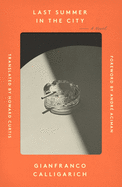
| Publisher: | Farrar, Straus and Giroux | |
| Genre: | Psychological, Literary, Fiction | |
| ISBN: | 9780374600150 | |
| Pub Date: | August 2021 | |
| Price: | $26 |
| Starred | Fiction |
by Gianfranco Calligarich, trans. by Howard Curtis
Appearing in English for the first time since its original Italian publication in 1973, Gianfranco Calligarich's Last Summer in the City is both a notable literary rediscovery and an arresting study of bohemian ennui.
Leo Gazzara--whose name, his lover pointedly remarks, "sounds like a lost battle"--is adrift, languishing in the economic hangover following Italy's postwar boom. While his peers take to the pursuit of degrees, spouses and careers, Leo relocates from Milan to Rome, where his tenuous job prospects soon dry up. For Leo, to be in the city is to float through a fog of malaise, as "Rome by her very nature has a particular intoxication that wipes out memory." Regarding Rome, Calligarich renders his protagonist's ambivalence brilliantly: "There can be no half measures with her, either she's the love of your life or you have to leave her." Awash in a sea of unmeaning, Leo keeps his mooring though a few authentic connections: an abiding love of the ocean, a passion for secondhand books, his mercurial lover Arianna and a friendship with kindred spirit Graziano.
A gorgeous introduction by André Aciman (Call Me by Your Name; Find Me) provides valuable cultural and biographical context for the novel and its author, as well as the careful work performed by translator Howard Curtis. Leo's repeated remarks that he is "at the end of [his] tether," for example, subtly hint at the existential despair threatening to overtake him.
With even the original Italian only sporadically in print since publication, this translation of Calligarich's novel is a literary jewel to be treasured. --Theo Henderson, bookseller at Ravenna Third Place Books in Seattle, Wash.
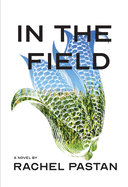
| Publisher: | Delphinium | |
| Genre: | Women, Lesbian, Biographical, Fiction, LGBTQ+ | |
| ISBN: | 9781953002037 | |
| Pub Date: | August 2021 | |
| Price: | $26.95 |
| Fiction |
by Rachel Pastan
"What if Cinderella had asked her mother's tree to give her a microscope instead of a ballgown?" With In the Field, Rachel Pastan (Alena) offers a compassionate, clear-eyed story of self-determination, love and science. The novel begins in 1982, when Dr. Kate Croft receives a phone call from the Nobel committee, then rewinds to 1923, when Kate is a first-year student at Cornell University, to the disapproval of her family, male professors and classmates.
Kate is entranced by biology, if not obsessed: "The cell was an uncharted country, and she was an explorer newly landed on shore... that was part of the joy of it." Socially challenged and estranged from her family, she grows up with a single-minded devotion to her work, despite the struggles of being a woman in a male-dominated field and her difficulties in love.
An author's note acknowledges that Kate Croft is based on Barbara McClintock, but Pastan makes clear that this is a heavily fictionalized account of the geneticist's personal life, while remaining accurate to the science. Kate is a "corn man," in the parlance of the day, studying maize genes at Cornell's College of Agriculture. Kate's greatest joy is in carefully tending her corn, her slides and her data. Other scientists profit off her discoveries (she is a gifted researcher) and deny her credit; she has difficulty accepting help.
In the Field excels in its multifaceted view of a complex woman. Readers will be better for time spent with this patient, tender, loving examination of a life devoted to examination of life. --Julia Kastner, librarian and blogger at pagesofjulia
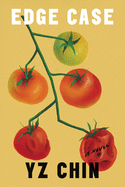
| Publisher: | Ecco | |
| Genre: | Family Life, General, Literary, Asian American, Fiction | |
| ISBN: | 9780063030688 | |
| Pub Date: | August 2021 | |
| Price: | $26.99 |
| Fiction |
by YZ Chin
In her debut novel, Edge Case, YZ Chin uses the familiar trope of a marriage falling apart in unexpected ways to explore big questions of love, belonging, immigration and identity.
When Edwina returns home to her New York apartment to find her husband, Marlin, has disappeared, she's left to wonder: Is he missing, or has he simply left her? Should she proceed as though nothing has changed, or stop everything to save her marriage? Will she and Marlin be able to continue their applications for green cards without each other? These questions haunt her as she recounts to an unnamed therapist she met on a dating app the story of the days surrounding Marlin's disappearance.
The uncertainty of her marriage is paralyzing for Edwina, who wanders the city in search of signs of her missing husband between long missives to this Internet stranger. This paralysis never carries through to the pages of Edge Case, however, which is perfectly paced. The domestic suspense of Edwina's relationship status ultimately reaches well beyond the walls of her small, lonely apartment: to the small, unwelcoming room of U.S. Customs and Border patrol, who once held Marlin aside when re-entering the United States; to the equally unwelcoming home of Edwina's mother in Malaysia, who insists her daughter lose more weight; to the male-dominated start-up office where Edwina works, hoping her boss will someday sponsor her green card application. The result is a riveting and poignant tale, offering sharp insights into--and criticisms of--American culture and immigration policy, neatly packed in the story of one woman's transformational journey through solitude. --Kerry McHugh, blogger at Entomology of a Bookworm
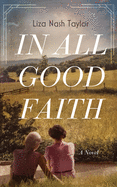
| Publisher: | Blackstone Publishing | |
| Genre: | Women, General, Literary, Coming of Age, Fiction, Historical | |
| ISBN: | 9781982603977 | |
| Pub Date: | August 2021 | |
| Price: | $27.99 |
| Fiction |
by Liza Nash Taylor
Liza Nash Taylor's second novel, In All Good Faith, tells a compelling, insightful story of two women whose lives intertwine unexpectedly during the Great Depression. May Marshall Craig, the protagonist of Taylor's debut novel, Etiquette for Runaways, has returned from Paris to her Virginia hometown, where she's running her family's market and caring for her two young children. When a family tragedy forces her lawyer husband to accept a job in Washington, May takes on even more responsibility at home. But financial worries and a long-distance partnership put a growing strain on her marriage.
In Boston's West End, shy Dorrit Sykes is grieving her mother's death, pinching pennies from her seamstress work and wrestling with doubts about her family's Christian Science faith. Eventually, Dorrit travels with her father to Washington, D.C., for a veterans' march, encountering people and situations wildly different from any in her previous experience. The two women cross paths some months after the march, and their encounter will change both their lives.
Told in both women's voices, Taylor's narrative touches on faith in the religious sense, but far more important is the faith that both women learn to place in themselves and each other, plus a small circle of loved ones. In All Good Faith is both a quiet, unflinching account of daily privations during the Depression and a story of women fighting to have their ideas taken seriously. Ultimately, though, despite tragedy and sorrow, it is an uplifting story of friendship and hope. --Katie Noah Gibson, blogger at Cakes, Tea and Dreams
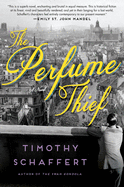
| Publisher: | Doubleday | |
| Genre: | General, Fiction, Historical, World War II, LGBTQ+ | |
| ISBN: | 9780385545747 | |
| Pub Date: | August 2021 | |
| Price: | $27 |
| Fiction |
by Timothy Schaffert
For many queer men and women--such as narrator Clementine--Paris "had been invented for us, inspired by imaginations," but that was before the Nazi occupation. This is illustrated in the intoxicatingly vivid The Perfume Thief, Timothy Schaffert's sixth novel.
A perfumer, former thief and an American expatriate in her 70s, Clementine easily moves among Paris's bordellos and cabarets, concocting fragrances based on personal experiences, the memory of an old lover, the ticking of a pocket watch, a field of bluebells. It's dangerous business, as Nazi soldiers often lounge at the bordellos, giving prostitutes luxuries taken from Jewish shopkeepers who have now disappeared; the Nazis' largess could--and will--vanish at any moment.
Clementine returns to crime when she's asked to steal the diary of a well-known perfumer that contains formulas that may date back to Cleopatra. The mission is to keep the book from the Nazis, especially bureaucrat Oskar Voss, whose ruthlessness Clementine uses for her own purposes. For Clementine, perfumes reveal personalities, are useful as codes to military secrets and essential as escapism, allowing one "to slip away into tranquility, into that part of your brain where all the awful things get hushed."
The Perfume Thief lyrically savors the myths and lore of fragrance "made of whispers, of secrets written in the cream of your coffee," wrapped in a gripping historical mystery. Schaffert (Devils in the Sugar Shop), a professor at University of Nebraska-Lincoln, delivers an unusual, clever tale that captures the nuances of Paris under occupation, featuring resilient characters fighting for the city's soul. --Oline H. Cogdill, freelance reviewer
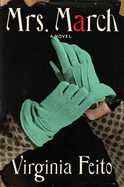
| Publisher: | Liveright | |
| Genre: | Psychological, Domestic, Satire, Thrillers, Fiction | |
| ISBN: | 9781631498619 | |
| Pub Date: | August 2021 | |
| Price: | $26 |
| Mystery & Thriller |
by Virginia Feito
If Virginia Feito's Mrs. March were a film, it would be called highly stylized, so deliciously drenched is it with the signifiers of an upscale Manhattan of decades past. The novel's cinematic aspect has also been noted by Elisabeth Moss, who is slated to produce and star in a film adaptation.
Mrs. March, a housewife and mother--referred to by her married name throughout the novel--resides on Manhattan's Upper East Side. She's married to George, a college professor turned novelist whose latest book is the talk of the town. The manager of a shop that Mrs. March frequents asks her, "Isn't this the first time he's based a character on you?... I could be wrong, of course, but... you're both so alike...." Mrs. March hasn't yet read George's new novel but knows that its protagonist is a long-in-the-tooth prostitute.
While poking around in George's study, Mrs. March spies a news clipping peeking out from one of his notebooks, its headline "Sylvia Gibbler still missing, presumed dead." Mrs. March has heard about this young woman from Maine: her disappearance from her hometown has been in the news. Mrs. March concludes that George is using the article for research, but when she gets an update on the Gibbler story, a seed of doubt takes root.
The earliest pages of Mrs. March suggest that Feito has committed to a straight-ahead retro thriller of old New York, but gradually, Mrs. March becomes something more than an amateur sleuth: she doubles as the novel's subject. Mrs. March is window-dressed to perfection as a psychological thriller-cum-cosmopolitan grotesque. --Nell Beram, author and freelance writer
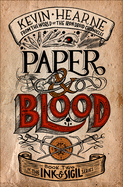
| Publisher: | Del Rey | |
| Genre: | Fantasy, Contemporary, Paranormal, Fiction, Action & Adventure | |
| ISBN: | 9781984821287 | |
| Pub Date: | August 2021 | |
| Price: | $27 |
| Science Fiction & Fantasy |
by Kevin Hearne
Kevin Hearne (Ink and Sigil) sends aging sigil agent Al MacBharrais and Buck Foi, his gleefully crude hobgoblin sidekick, Down Under in the Iron Druid spinoff series' merrily offbeat, strangely heartwarming second installment.
When two fellow magic sigil agents disappear, Al and Buck back-burner their investigation into their own deadly curse and travel to Australia to rescue them. The apprentice of one missing agent accompanies them, as the pair face off against bizarre chimeric monsters, causing Buck to wonder aloud, "What came first, the turtle dragon spider or the egg?" While trying to identify the source of the monsters and reach the missing agents, the heroes encounter an ancient death goddess in the body of an emergency services worker, team up with the legendary Iron Druid, and find out that Al's Canadian receptionist, Gladys Who Has Seen Some Shite, has powers far greater than talking hockey.
Readers who haven't read the previous book should have no trouble jumping into the story, and Iron Druid fans will appreciate the amount of time devoted to the druid and his hounds. Although the distraction of the missing agents keeps Al from making much progress toward lifting his curse, this urban fantasy road trip builds new depth in the relationships among its characters. Hearne's comfort in this established world shows as he smoothly alternates between fast-moving, wise-cracking action scenes and embedded short stories told by the characters, which illustrate the novel's central theme: "Ye always have tae fight the monsters, no matter where they are." --Jaclyn Fulwood, blogger at Infinite Reads
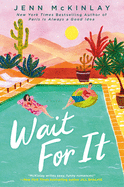
| Publisher: | Berkley | |
| Genre: | Women, Romantic Comedy, Romance, Contemporary, Fiction | |
| ISBN: | 9780593101377 | |
| Pub Date: | August 2021 | |
| Price: | $16 |
| Romance |
by Jenn McKinlay
Jenn McKinlay (Paris Is Always a Good Idea; For Better or Worse) has written another lively romance with Wait for It. Set in Phoenix, Ariz., the book's warm vibes echo the vivid desert that surrounds Annabelle Martin, who needed a fresh start. She's not even 30, and she's been divorced twice. When her first ex-husband proposes to her again, and she accidentally destroys the moment, ruining what she thought was their friendship, Annabelle decides she needs to leave Boston, immediately.
She's thrilled to flee a New England winter to join her best friend in the Arizona sunshine, working at Sophie's graphic design agency. But there are a few snags in the way: a bitter, manipulative coworker who's trying to undermine her work decisions and make her look bad to Sophie, and a strangely reclusive landlord. Annabelle does love the guest house she's renting, but when her landlord starts leaving persnickety letters taped to her door, she decides that it's time to meet him. Little does she know that her landlord is about to change her life forever.
Annabelle's capers will leave readers laughing as she deals with a complicated relationship with Nick, the landlord, and deals with work drama in her own fabulous way. A decidedly imperfect main character, Annabelle discovers a lot about herself, just as she's learning to navigate the Phoenix area and her new job. Funny and lighthearted, Wait for It will be appreciated by fans of Christina Lauren or Tessa Bailey. --Jessica Howard, bookseller at Bookmans, Flagstaff, Ariz.
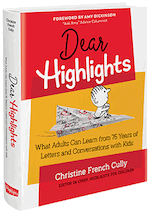
| Publisher: | Highlights Press | |
| Genre: | Family & Relationships, Life Stages, Parenting, Adolescence, General, School Age | |
| ISBN: | 9781644723258 | |
| Pub Date: | August 2021 | |
| Price: | $24.99 |
| Nonfiction |
by Christine French Cully
For the past 75 years, Highlights magazine has provided kids with entertaining and informative stories, puzzles, games and other activities to foster learning and spark children's creativity. One of the magazine's most popular features is its "Dear Highlights" column, where editors respond to letters, poems, drawings and (more recently) emails from young readers. But the responses aren't limited to the published ones: the Highlights editorial team answers every single piece of mail they receive. In Dear Highlights, editor-in-chief Christine French Cully collects dozens of pieces of correspondence from children, with accompanying essays reflecting on what she and her colleagues have learned from the kids who write to them. The result is a joyous, nuanced celebration of childhood, and a clarion call to adult readers to really listen to the children in their lives.
Dear Highlights is divided into broad categories, with letters addressing kids' concerns about family and friends, school challenges and dynamics, and how to figure out what (and whom) to be when they grow up. But the letters and replies also tackle difficult questions that many children face. "How can I be a supportive big sister and help my new sibling in a multiracial family?" Ashley wrote in 2011. K.D., whose parents had been separated for about a month in 1991, admitted, "Now my dad wants to come back. I'm not sure I want him back." Other letters deal with troubling historical events, such as the Challenger explosion or the attacks of September 11, 2001, the loss of pets or loved ones, and "Really Hard Things" like bullying, abuse and mental health struggles.
While their contents frequently address heavy subjects, the letters and the editors' responses are often infused with lightness. Readers' personalities shine through in the notes they send, such as a poem called "Hope" written by 13-year-old Kenneth in 1985. "I've seen hope in newspapers. I've listened to hope," he wrote. "HOPE IS EVERYWHERE." The editors seek to validate children's feelings and concerns, but always strive for a positive tone in their replies. They remind readers that they themselves, their families and friends, and other caring adults like teachers and school counselors have many resources at hand to solve their problems. They also call to mind the words of another adult who befriended many children: Fred Rogers, who famously advised his young TV viewers to "look for the helpers" when things seemed scary or sad. The Highlights editors, like Mr. Rogers, also encourage children to be the helpers.
The book includes a section about the Covid-19 pandemic, a unique event in the lives of Highlights readers as well as the magazine's editorial staff. As Cully notes, "For the first time, we were confronting many of the same emotions as our readers, at the same place in time. Our adult circumstances--working from home, being unable to socialize with friends, missing milestone events, and feeling bored--were very similar to their experiences." The staff empathized with readers like Sylvie, whose sixth birthday party was canceled because of the pandemic, or Makayla, who wrote, simply: "I miss my friends." They also assured readers that their parents, teachers and other adults (like scientists working to develop vaccines) were doing their best to keep everyone safe, and that production of the magazine would continue--no doubt a bright spot for bored kids in quarantine.
Written correspondence has its limits, Cully admits; letters and drawings rarely provide enough context to give a full picture of a child's concerns. Partly for this reason, in almost every response, the staff urges kids to seek out adults they can trust, whether they need help coming up with ideas to fill boring weekends or are troubled by deeper concerns. Notes and drawings about historical events, such as the assassination of President John F. Kennedy, are often a way for children to process their part in collective trauma and grief. In every case, the Highlights staff seeks to answer with respect, compassion and (where appropriate) sound advice. Sometimes, Cully notes, readers write back to share the results of following that advice, or to ask for help with additional problems.
Taken together, the letters and responses in Dear Highlights are a fascinating look at childhood over the past seven decades, and a testament to how kids' fundamental concerns--being loved, feeling safe and learning how to navigate the world--remain the same. Full of humor, sadness, frustration, joy and all the other emotions of childhood, the book stands as an important reminder that listening to children with empathy and respect can be the most powerful way to help them grow into confident, caring adults. --Katie Noah Gibson
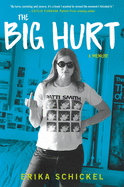
| Publisher: | Hachette Books | |
| Genre: | Biography & Autobiography, Women, Family & Relationships, Life Stages, Personal Memoirs, Teenagers, Dysfunctional Families | |
| ISBN: | 9780306925054 | |
| Pub Date: | August 2021 | |
| Price: | $28 |
| Biography & Memoir |
by Erika Schickel
When she was barely 18, Erika Schickel made a horrendous romantic decision. Nearly three decades later, she made another one. In the pain-drenched but clear-sighted The Big Hurt, Schickel takes a microscope to both choices and to the social forces that facilitated them. "What if every decision I had made since 1982 was built on the faulty premise that I was a 'bad girl'?" she wonders. "What if all along I had just been a very hurt girl trying to survive in a predatory world?"
The first romantic debacle occurs in 1982, when Schickel is a senior at a Massachusetts boarding school. After her affair with married teacher Henry Baker goes public, he's fired and she's asked to leave the school. The second misbegotten romance, which begins in 2009, is with a famous crime novelist whom Schickel refers to as Sam Spade. (His true identity will be obvious to fans of noir fiction.) Schickel leaves her husband of 20 years, with whom she has two daughters, for Spade, who, like Baker, ultimately kicks her to the curb.
The Big Hurt bounces around in time, interweaving Schickel's bittersweet memories of her parents, novelist Julia Whedon and film critic Richard Schickel, who gave her a privileged Manhattan childhood but not much guidance. Schickel (You're Not the Boss of Me: Adventures of a Modern Mom) is a resourceful writer who can find humor in even the self-sabotaging habits that drove her romantic misadventures. The result is a dirty-laundry-airing memoir of the highest order. --Nell Beram, author and freelance writer
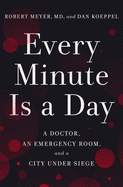
| Publisher: | Crown | |
| Genre: | Biography & Autobiography, Medical (Incl. Patients), Health Care Delivery, Medical, Disease & Health Issues, Disasters & Disaster Relief, Social Science | |
| ISBN: | 9780593238592 | |
| Pub Date: | August 2021 | |
| Price: | $28 |
| Starred | Social Science |
by Robert Meyer, Dan Koeppel
The Bronx's Montefiore Medical Center serves an ethnically diverse community of the working poor in New York City. Between March and September 2020, 6,000 Covid-19 patients crossed its threshold. Nearly 1,000 of them died. Unfolding in terrifying real time, Every Minute Is a Day is emergency room doctor Robert Meyer's riveting diary of an unprecedented crisis.
Compared to AIDS and 9/11, the previous medical disasters of Meyer's 25-year career, Covid felt bewildering for how quickly the situation changed. High fever and dangerously low blood oxygen were the initial hallmarks of the illness, but new symptoms and potential therapies emerged all the time. Medical staff learned by doing. For instance, "proning" (turning people onto their stomachs) was found to forestall intubation in many cases.
As the morgue filled up, Meyer was distressed not just by patients dying apart from loved ones, but at the thought of seriously ill people avoiding hospital treatment for fear of infection. Relating bereavements from his past--his mother was killed by a drunk driver; his son's friend died of cancer--helps him set the pandemic in context. He also weaves in Montefiore's history and his colleagues' struggles. Covid turned personal when his mentor and the ER director's father both tested positive.
Compiled into a firsthand account by journalist Dan Koeppel (Banana), Meyer's cousin, and based on interviews as well as e-mails and texts they exchanged, this is hard-hitting nonfiction in the vein of Five Days at Memorial. Its re-creation of an atmosphere of daily panic and uncertainty makes it as absorbing as any thriller. --Rebecca Foster, freelance reviewer, proofreader and blogger at Bookish Beck
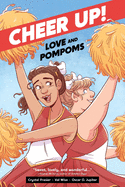
| Publisher: | Oni Press | |
| Genre: | Romance, Coming of Age, Young Adult Fiction, Comics & Graphic Novels, LGBTQ+ | |
| ISBN: | 9781620109557 | |
| Pub Date: | August 2021 | |
| Price: | $14.99 |
| Starred | Children's & Young Adult |
by Crystal Frasier, illust. by Val Wise
Debut YA creators Crystal Frasier and Val Wise subvert stereotypical portrayals of high school cheerleaders as cliquish mean girls in Cheer Up!, a charming graphic novel about a close-knit cheer squad of misfits.
Annie is a brilliant yet antisocial student in her senior year of high school. Her "transcript is lopsided. No sports. No clubs. No extracurriculars of any kind." At her (once-a-cheerleader) mother's suggestion, Annie joins the cheerleading squad to make friends and bolster her college applications. This means spending time with her ex-friend and team captain, Bebe, the only out trans girl at school. Bebe is a shy people-pleaser who is being forced by her parents to keep her grades up if she wants them to continue supporting her transition. Annie encourages Bebe to stand up for herself, while Bebe teaches Annie how to be a team player. The two girls rekindle their friendship--and more--as they bond over cheerleading and negotiate queerness in high school.
Wise's expressive art conveys personality through body language while imbuing action sequences with energy and movement. Panels of lingering glances and shy smiles show Annie and Bebe falling for one another as Frasier's text develops a sweet, slow-burn interracial queer romance (Annie is white and a lesbian; Bebe is Latinx and questioning). Frasier maintains a lighthearted tone while depicting the microaggressions Bebe experiences: "If I screw up or freak out, it's because I'm a trans girl," Bebe says, "Never because I'm just not perfect." Cheer Up! is joyful and insistent in its portrayal of queer teens like Annie and Bebe as worthy of love and respect, imperfections and all. --Alanna Felton, freelance reviewer
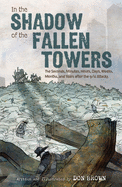
| Publisher: | Etch/HMH Books for Young Readers | |
| Genre: | Middle East, People & Places, Emigration & Immigration, Young Adult Nonfiction, Social Topics, United States - 21st Century, Military & Wars, Politics & Government, United States - General, History, Social Science, Comics & Graphic Novels | |
| ISBN: | 9780358223573 | |
| Pub Date: | August 2021 | |
| Price: | $19.99 |
| Children's & Young Adult |
by Don Brown
Award-winning author/illustrator Don Brown (The Unwanted: Stories of the Syrian Refugees) brings his resonant storytelling to the pivotal tragic attacks of September 11, 2001, in this powerfully emotional graphic novel.
Most adults remember exactly where they were when two airliners struck the World Trade Center's Twin Towers in New York City. But for those who weren't born yet or were too young to realize the impact of that day, Don Brown contextualizes in In the Shadow of the Fallen Towers the moments immediately after the attacks and in the months and years that followed.
He begins at 10:28 a.m., when the South Tower collapsed, and follows a group of firefighters into what will eventually be called "the Pile." From there Brown captures the voices of the victims in their own words: "At that point I realized I was going to die...." Provocative pen, ink and digital paint illustrations are chilling and emotive, and frank narration bears witness to unexpected perspectives, like "pets in kennels waiting for their owners." Brown's broken panels and loose drawing style colored in muddled blues, grays and browns--the only bright colors shining from fires that "continue for months" and the red and blue of the American flag--mimic the confusion and pervasive sadness. An afterword discusses the cost of war, rise of hate crimes against Muslims and health problems incurred by first responders. Eye-opening statistics and an extensive bibliography are also included. This hard-hitting graphic novel is reverential and revelatory. --Lana Barnes, freelance reviewer and proofreader
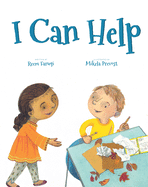
| Publisher: | Eerdmans Books for Young Readers | |
| Genre: | Bullying, Values & Virtues, Social Themes, Juvenile Fiction, Peer Pressure | |
| ISBN: | 9780802855046 | |
| Pub Date: | August 2021 | |
| Price: | $17.99 |
| Children's & Young Adult |
by Reem Faruqi, illust. by Mikela Prevost
Pakistani American author Reem Faruqi (Lailah's Lunchbox) based her realistic picture book about peer pressure and kindness, I Can Help, on a personal childhood experience. Mikela Prevost's naturally hued illustrations match Faruqi's gentle text and clearsighted plot.
In this first-person narrative, Zahra is a sweet, introspective girl who evocatively describes the changing autumn leaves as "the colors of red pepper, cumin, and turmeric, the spices Nana uses." She introduces her classmate Kyle by focusing first on wonderful things about him: he is "generous... funny... kind." But, she says, "Kyle is not great at reading. He has trouble sounding out words." Zahra's teacher encourages other children to help Kyle, and Zahra happily volunteers. She does such a good job that the teacher recognizes her with "not just one, but two thumbs up" and Zahra sits tall with pride. Though Kyle is a good friend and Zahra enjoys helping him, she's still vulnerable to negative opinions. Other students insult Kyle and ask Zahra why she helps him; Zahra shamefully doesn't defend herself or Kyle and begins to act differently toward him. It's not until Zahra enters a new school the next fall that she realizes she feels better when she does the right thing.
Prevost's soft, mixed-media illustrations in a subtle palette show diverse classmates and characters' emotionally expressive faces and body language. Notes from the author and illustrator reinforce the message, with Faruqi saying she once acted like Zahra and regrets her "actions to this day," and Prevost discussing her experience of being labeled "different" because of Juvenile Rheumatoid Arthritis. I Can Help teaches empathy and caring, and is an excellent title to read aloud with one child or a group. --Melinda Greenblatt, freelance book reviewer